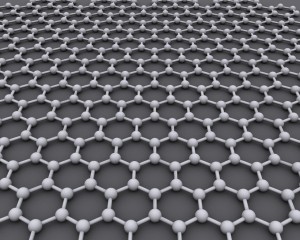Nathan Bedford Forrest, the gaunt, fierce, bearded cavalry general known as “Devil Forrest” during the American Civil War, is said to have summed up his successful cavalry tactics as, “I got there first with most men,” often rendered more colorfully as “I got there firstest with the mostest.” Speed is often proven to be the key to success in many human endeavors, which is why Apple Inc.’s (NASDAQ:AAPL) sluggish response to the emergence of graphene as the latest high-potential should be troubling to those with money invested in the Cupertino company.
 Graphene, a thin honeycomb layer of carbon atoms, has properties that are close to science fictional and will revolutionize technology – quite literally – once the hurdle of mass production is conquered. In this case, speaking of the substance as “revolutionary” is not merely an advertising gimmick. Graphene’s properties are unlike any other known substance, in that it is simultaneously transparent and is practically a superconductor of both electrical and thermal energy.
Graphene, a thin honeycomb layer of carbon atoms, has properties that are close to science fictional and will revolutionize technology – quite literally – once the hurdle of mass production is conquered. In this case, speaking of the substance as “revolutionary” is not merely an advertising gimmick. Graphene’s properties are unlike any other known substance, in that it is simultaneously transparent and is practically a superconductor of both electrical and thermal energy.
For the layman, a YouTube video sums up at least one remarkable property of the material. In the video, a man is seen holding a slim rectangle of graphene at one end. The graphene transmits heat rapidly and efficiently enough for the heat of the man’s hand to cause the far end of the rectangle to slice quickly and neatly through an ice cube, while the man can feel the cold of the cube the second the graphene touches it.
Graphene will likely be used for thousands of applications, including, possibly, paper-thin, transparent mobile devices capable of functioning like a smartphone, yet folding or rolling into a tiny roll or bundle when not in use. The possible uses range from ultracapacitors that could be recharged in a few minutes, hydrogen storage for fuel cell automobiles, cheaper solar cells, and of course highly efficient electronics.
Samsung has pounced eagerly on graphene, funding a major research effort to find cheap ways to mass produce the carbon sheeting and patenting at least 38 graphene-related product concepts with the United States Patent & Trademark Office (USPTO). At the same time, Apple (AAPL) has patented just two concepts related to graphene.
While this appears ominous, it must be remembered that quality can overcome quantity in many cases. If Apple’s patents are higher quality than Samsung’s, then it is not out of the realm of possibility that a handful of patented concepts could actually give the Cupertino firm a more secure beachhead in the new technology than its Korean rival will achieve with hundreds of lower quality patents.
One of Apple’s patent applications, for a battery heat sink consisting of a wraparound monomolecular sheath of graphene, is definitely a highly useful idea. Created by Ramesh Bhardwaj, the invention would permit a much bigger battery to run cool, greatly boosting battery life. Nevertheless, it clearly behooves Apple Inc. (AAPL) to remain alert and pursue the new technology energetically if it wishes to avoid being left behind by Samsung.



